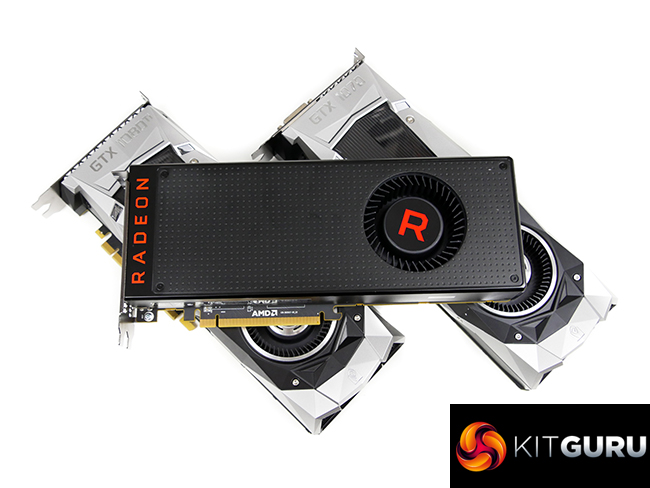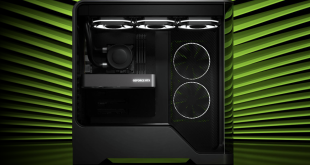In Radeon RX Vega56, AMD has a worthy competitor to Nvidia's popular GTX 1070. The Vega 10-based AMD card offers performance that is generally faster than a GTX 1070 Founders Edition. RX Vega56 also manages to hit a solid performance sweet-spot for 1440P gamers looking to invest in a roughly $400 graphics solution (provided Vega56 actually ships for $399).
Vega has given AMD an opportunity to push the benefits of FreeSync monitors. It is hard to disagree with the value aspect of FreeSync in comparison to G-Sync. AMD RX Vega56 hits a performance point that should satisfy 1080P and 1440P FreeSync users, especially if you are happy to reduce a few settings in search of higher-than-60-FPS gaming.
Where AMD has clearly not challenged Nvidia is power efficiency. When operating in its performance-centric ‘Turbo' power profile, RX Vega56 consumed significantly more power than the GTX 1070 FE (and higher-end Nvidia offerings for that matter). Thankfully, AMD wisely includes different power-limiting states that can be selected via the OS-based WattMan software, albeit at the expense of performance.
High power draw unsurprisingly stresses the cooling solution. While premium in design, the blower-style cooler deployed by AMD is loud. Temperature levels for RX Vega56 are decent, given that the thermal throttling point is set at 75°C in the ‘Turbo' performance mode. However, the fan has to work hard (2400 RPM) to maintain such temperature levels and it becomes somewhat unpleasant to sit next to (without headphones on).
AIB partner cards should address the high noise output while probably reducing temperatures in a double whammy. We will have to wait and see what price premiums are charged for such variants of RX Vega56.
At the suggested price of $399 (estimated £360-380 in the UK), AMD's RX Vega56 is a strong competitor to Nvidia's GTX 1070. The AMD card generally outperforms Nvidia's reference-clocked board albeit while consuming more power and operating at a higher noise output than the Founders Edition cooler.
In essence, AMD‘s competitive Radeon RX Vega56 allows a prospective buyers to trade the power efficiency of a GTX 1070 for the AMD card's higher performance and a clear route to a cheaper variable reference rate – FreeSync – gaming monitor. We think that's an appealing package, provided the card's retail price stays close to that of GTX 1070 solutions.
Discuss on our Facebook page HERE.
Pros:
- Strong competitor for GTX 1070.
- Good 1440P gaming performance.
- Operating temperatures are decent, despite the loud cooler.
- Cost-effective variable refresh rate gaming solution with a FreeSync monitor.
- Different software-based power profiles give flexibility.
- High memory bandwidth (compared to GTX 1070) may benefit games at higher resolutions.
- Eye-catching backplate and an aesthetically-friendly black design.
Cons:
- High power consumption in the performance-biased ‘Turbo' mode.
- Loud cooler.
- Dual 8-pin connectors seems unnecessary and may deter some potential customers.
KitGuru says: AMD's Radeon RX Vega56 puts in a strong fight against the Nvidia GTX 1070 and proves itself as a worthy contender in the mid-to-high-end graphics card market. At the suggested price of $399, and with support for lower-cost FreeSync monitors, the RX Vega56 is a compelling option for gamers looking to jump into the variable refresh rate ecosystem.
 KitGuru KitGuru.net – Tech News | Hardware News | Hardware Reviews | IOS | Mobile | Gaming | Graphics Cards
KitGuru KitGuru.net – Tech News | Hardware News | Hardware Reviews | IOS | Mobile | Gaming | Graphics Cards





If… this Vega56 could be had not (as now) this blower edition, could be bought in the market without the profiteering inflicted on it… And this is the biggest, if there were 1440p monitors with FreeSync and those weren’t marked-up well beyond the mainstream 1440p. Only then might this have viable appeal.
At this time plunking down the “overage” to move into such upgrade levels of hardware is not a move many should be looking toward. 1440p feels almost past its’ prime or seems bowled-over by a more robust infusion of 4K. So you you’ll be ahead to hold and wait, entry 4K is not that far off with close to a similar cash out-lay of such inflated hardware.
I wish reviewers would stop benching GTA5. It’s ancient and no longer graphically demanding but most importantly, it doesn’t seem to be optimized at all for AMD cards.
As for the power profiles, if the 56 is anything like the 64, the ‘balanced’ mode should only effect performance by 5% but reduce power consumption by 10-30W.
People127s
Office66s
But GTA5 is a really popular game still, and prospective buyers want to see how the card performs on a game they play.
And @LukeHill are you going to reduce the rating of this card after it was revealed that AMD’s introductory price was nowhere near the actual price, thus making the 56 not so much of a great deal for price/performance?
I’m an AMD fan and plan on buying a Vega 56 Monday (Aug 28) if possible. I still play it so it matters to me. I am aware GTAV does significantly worse on AMD though, which is exactly why it won’t deter me from purchasing Vega.